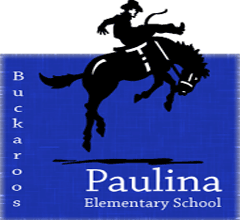Wigglin’ out to Paulina Elementary
 Paulina Elementary joined schools in the “wormability” movement! This makes a total of seven schools wormin’ it up!
Paulina Elementary joined schools in the “wormability” movement! This makes a total of seven schools wormin’ it up!
 Paulina Elementary joined schools in the “wormability” movement! This makes a total of seven schools wormin’ it up!
Paulina Elementary joined schools in the “wormability” movement! This makes a total of seven schools wormin’ it up!
 This is it! The final delivery of the season! It was a cool one for sure, and one that I will remember for a while (well at least when I have the pictures as prompts…I need all the help I can get. The mind ain’t what it used to be) On Monday, I took a pound of worms, a bin, peat moss, shredded newspaper, and my hubby to a Llama and Alpaca Farm. Marty, the human leader of the animals, greeted us with a huge smile and a hand shake. She lead us to the future home of the red wigglers, a renovated chicken coop that was invaded by racoons…Yikes. The chicken coop was already set up with a heat lamp and hay…perfect for a red wiggler set up in November. Totally cool! These guys love their llamas and alpacas and will soon love their red wigglers. Just look at that set up!
This is it! The final delivery of the season! It was a cool one for sure, and one that I will remember for a while (well at least when I have the pictures as prompts…I need all the help I can get. The mind ain’t what it used to be) On Monday, I took a pound of worms, a bin, peat moss, shredded newspaper, and my hubby to a Llama and Alpaca Farm. Marty, the human leader of the animals, greeted us with a huge smile and a hand shake. She lead us to the future home of the red wigglers, a renovated chicken coop that was invaded by racoons…Yikes. The chicken coop was already set up with a heat lamp and hay…perfect for a red wiggler set up in November. Totally cool! These guys love their llamas and alpacas and will soon love their red wigglers. Just look at that set up! Here’s a picture of hay which is above sheets of newspaper. This will keep the worms warm especially during the chilly Bend nights.
Here’s a picture of hay which is above sheets of newspaper. This will keep the worms warm especially during the chilly Bend nights. Doesn’t this look yummmmmmy!!! Marty was all set with food scraps for the red wigglers. I put the rotting lettuce, celery, cucumbers and squash on top of the bedding and covered the scraps with the sheets of newspaper (another good use for USA today). I use the newspaper to keep the red wigglers contained to the food area so they won’t travel up through the hay. In the summer this helps reduce fruit flies.
Doesn’t this look yummmmmmy!!! Marty was all set with food scraps for the red wigglers. I put the rotting lettuce, celery, cucumbers and squash on top of the bedding and covered the scraps with the sheets of newspaper (another good use for USA today). I use the newspaper to keep the red wigglers contained to the food area so they won’t travel up through the hay. In the summer this helps reduce fruit flies.
Marty’s goal is to reduce her food waste and to also compost her llama and alpaca waste. I don’t have experience with animal waste so she is my test case. We will be chatting a bunch to see how the red wigglers are doing. I am excited to see what happens!!
Is it time for you to change your bedding? Has the bedding turned a rich dark color? It may be time.
Since the Red Wigglers are in a contained environment and aren’t able to migrate to a different area, an area where their bedding isn’t overwhelmed by their waste, it’s important to provide that area for them. First expose the bin to light and your Red Wigglers will migrate to the bottom. Skim the top layer, this is the rich organic fertilizer that you have been waiting for! Save it or put it to use.
For more detailed information, check out “Wonder Worman’s Quick Guide to Red Wiggling”. It’s a quick guide to get you going and you can download it here.
What’s on the menu today for Wonder Worman’s Super Composting Red Wigglers? There’s Red Leaf lettuce, banana peels, strawberries, oats, pasta, rice and spinach, among other things – Food scraps from the last couple of days. If you have kids and are looking for ways to get them even more excited about having Red Wigglers, make a project out of feeding your worms by creating a “soup” out of food that would normally go to waste – but still a good source of food for your Red Wigglers (Moldy bread? Bring it on! Rusty Lettuce? Yum!). Before putting this mix into the bin, add a bit of water to prevent any moisture from being absorbed by the mix from the existing bedding. Bon Appetit!
A friend of mine just forwarded me an interesting article he heard on NPR this morning. Raleigh, N.C. is having issues with their sewer lines and garbage disposals. I knew many people were putting kitchen waste down the disposal thinking they were reducing the waste in the landfill. Yes they are reducing the waste, but they can also recycle their waste at home without damaging the sewer lines. I used to put veggie waste down there too before I had red wigglers. Now I am putting that waste in my worms bins and producing super rich compost for my gardens and indoor plants. Whether or not people use red wigglers, I think it is so important to compost.